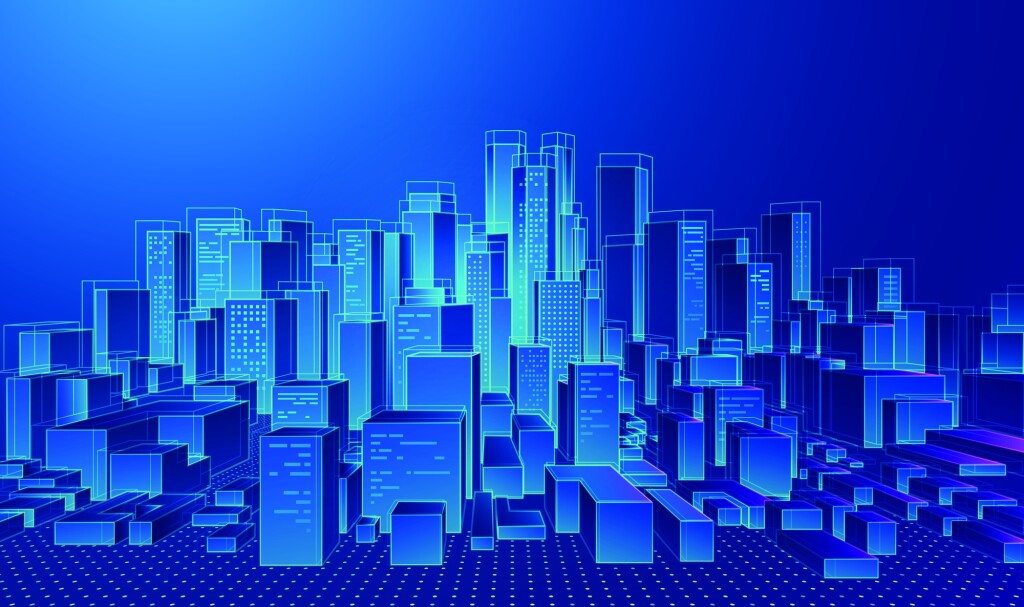It’s no secret inside the AEC industry, nor outside of it, that the built world is probably the single biggest contributor to climate change and carbon emissions in the world. Different entities quantify that contribution at different levels because of varying definitions of both how to calculate carbon emissions and what exactly constitutes the “built world,” but it’s significant no matter who you ask. (The World Economic Forum, for what it’s worth, estimates that the built world is responsible for 39 percent of the world’s carbon emissions as of September 2020.)
We also know, however, that work is being done to reduce the industry’s impact on the environment. There is still plenty of work to be done, to be clear, which can at least partially be achieved with more proportional investment from the broader financial community into these tools, but technology is being developed to address these issues. There are a lot of different ways to attack the emission problem, but digital twins often come up first, and for good reason.
To that end, the Digital Twin Consortium (DTC) has been looking at this complex issue with a series of white papers delving into how digital twins can play a significant role towards decarbonization. Recently, they published the latest paper in that series, entitled A Whole Systems Approach to Decarbonization Across the Building Lifecycle. You can download the whole paper here, and it is very much worth the full read, but a few of the takeaways in particular stood out to me when reading.
Looking at things from a high level, the DTCs paper really highlights the need to consider construction projects with the perspective of the whole building’s lifecycle front of mind. This seems like it should be obvious, but it’s certainly not always the case. It’s something that came up in a recent conversation with Alan Clinton from the Kaua’i County office. Talking about their Constraint District, he noted that, when new buildings are proposed to the county, they expect the building to last for 100 years and make plans with that in mind.
For the construction industry, there are so many stakeholders involved, to say nothing of the growing workload combined with a shrinking workforce, that keeping longer-term view in mind can be a big challenge. That change is needed, though. In the paper, the DTC says, “To reduce and eventually reverse the environmental damage we are causing, we will need to reimagine our buildings, cities and infrastructures as indivisible components of a larger, constantly regenerating and self-sustaining system. We need to more fully embed sustainable and high-performance buildings at both design and operation.”
Specifically, they say that the industry needs to shift towards “regenerative design,” emphasizing a whole-systems approach. Differentiating from the traditional workflow, rather than siloed work focused on reaching compliance and nothing more, the DTC recommends “regenerative design,” which focuses not only on the building, but considers everything with the surrounding environment, including other buildings and the natural environment.
In addition to that, they also emphasize that whole lifecycle consideration in design. This can be important for a lot of different reasons – a building’s durability, its utility, how people can enjoy it years down the line, etc – but it’s also extremely important in terms of carbon reduction. The operational phase of a building’s lifecycle contributes significantly to a building’s emissions. The DTC says, “Studies have indicated that the energy consumption of some buildings once in use can be as much as five to ten times higher than calculations made at the design stage,” citing this study.
Of course, they also discuss how digital twins play into this, specifically looking at three types of digital twins: Project, Asset, and Performance. A project digital twin, by their definition, is essentially a BIM model, which they acknowledge has its value but “is generally not kept up to date post building occupancy, and can fall out of date very quickly.” An asset digital twin, they say, is focused on the operational phase, utilizing sensors to garner key information during its lifecycle. However, they write, “The major flaw with this approach is that it only works well on existing buildings with significant amounts of data.”
And so they recommend the performance digital twin, which is something of a combination of the two. With the performance digital twin, they say, the building can be digitized from the BIM and machine learning, but also provides the ability to simulate performance that take into account things like the surrounding climate, material composition, and HVAC system operation. Also noting that owners and managers can use the performance digital twin “as a test bed for evaluating the building technologies ahead of their deployment.”
There is a lot of great information in this paper, putting crucial focus on an issue that is of the utmost importance to the entire industry. There is no easy way to reduce emissions in an industry this size to the point where it needs to get, but it’s something for which there is really no choice. The DTC argues, quite convincingly, that small changes won’t get it done. Wholesale changes in the way we think about construction and beyond are the only way to achieve these goals.






